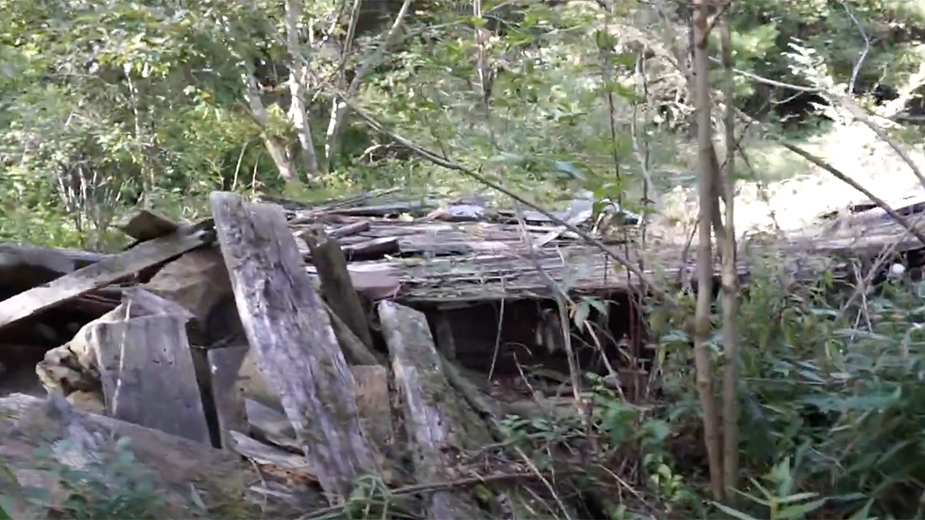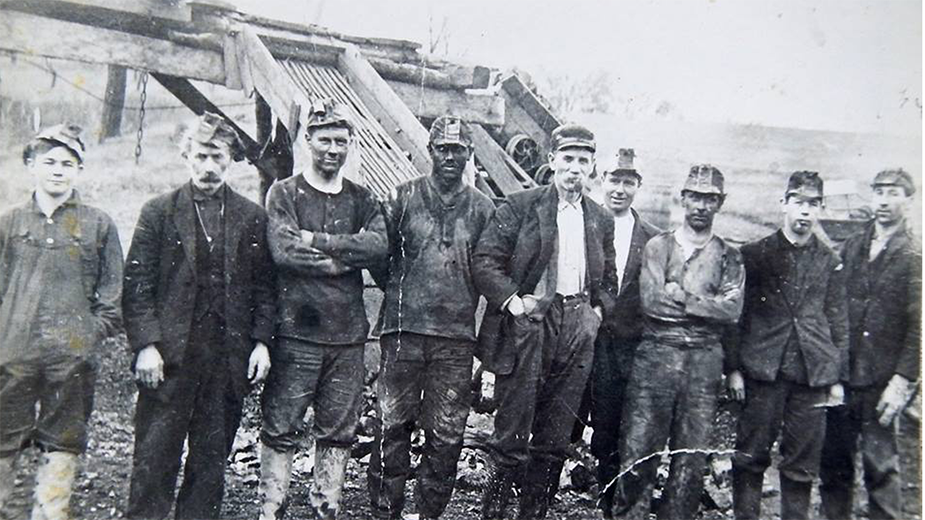NORTH JACKSON, Ohio – Along the western edge of what is today Meander Reservoir in Jackson Township, there lay the ruins of a former blacksmith shop that was once part of a thriving business district in this section of Mahoning County.
Little is known of this enclave, which during the late 19th century established itself along the western and eastern banks of what was then Meander Creek, spanning both Jackson and Austintown townships. The settlement has long disappeared, but its name has resonated through the local community for more than a century, begging an answer as to why the area earned a menacing moniker: “Helltown.”
“It was common knowledge growing up,” recalls Natalie Moherman Dechant, president of the Jackson Township Historical Society and whose family has deep roots in the vicinity. “It was over in the general area of New Road and Shaffer Road,” in the eastern part of Jackson Township, and portions of West Austintown.
Dechant, now 80 years old, recalls as a young girl her grandmother would talk about the area, describing it as a hamlet filled with hard-drinking miners, blacksmiths and other artisans. “There would be taverns there, they’d drink, get off work and raise hell – that’s what we’ve always put together about it.”
Still, there is no evidence on maps from the 19th century that depict an area known as Helltown, and much of its lore has passed down through generations by oral tradition. There is also some debate as to the exact location of this ghost town and there is no one alive today who can recollect firsthand that such a place even existed, Dechant says. “There’s not a lot of facts, just a lot of supposition,” she says.
But Helltown did exist.
A short article in the Mahoning Dispatch dated Feb. 8, 1884, puts to rest any speculation as to the area’s informal name. The piece references a “drummer” – 19th century parlance for a traveling salesman. According to the Dispatch, the salesman “had a narrow escape while attempting to ford the Meander at the Helltown bridge.” He had driven off the road, “upsetting his wagon, which contained a number of trunks. He plunged around the water for some time, and finally floated to a tree, which he grasped and saved himself.” The horses and trunks were also retrieved, but his goods were “almost entirely ruined.”
WELCOME TO HELLTOWN
This portion of Mahoning County, just south of Mahoning Avenue along the Meander, was initially embedded with seams of coal, especially in West Austintown. The earliest of these mines opened in 1835 on Michael Ohl’s farm, according to Joyce Hunsinger Pogany’s, “Austintown,” part of Arcadia Publishing’s “Images of America” series published in 2007. By the 1880s, 39 coal mines operated in the township, while 359 men and boys – some as young as 11 – were employed in these mines.
Business activity was able to thrive in part because of the Niles-New Lisbon Railroad, built in 1857 by Youngstown industrialist Chauncey Andrews. The railroad then constructed a West Austintown depot in 1869.
The largest coal mining operation in the Helltown district was the Harroff Coal Co., fed by a rail spur from the Niles-New Lisbon line. A saloon and restaurant stood outside the mine’s gates. There were at least two paint works, one on Wilcox Road and another on Fairview Road, that pulverized iron ore into red barn paint.
A station of the Pennsylvania Railroad was also erected in North Jackson to serve its Niles to Alliance line.
According to 1874 maps of Jackson Township and West Austintown, the Helltown area was bordered by Shaffer Road to the south and Fairview Road to the north. The “drummer’s” unfortunate accident at the Meander most likely occurred on either Fairview or New roads, since they were the only two thoroughfares in this section that spanned the Meander.
HELLTOWN’S DEMISE
Still, profitable mining in the region would prove short-lived. In Jackson Township especially, it was determined that the coal discovered there was of poor quality and was unsuitable for commercial use.
A Dispatch article dated Nov. 11, 1881, assesses the coal industry in the region: “All who have built big hopes on a fortune lying under their land seemed doomed to disappointment.” After several drilling attempts at reaching coal seams, “not a black diamond has been discovered beyond the surface vein, which crops out in several places in Jackson, but the quality is not considered good beyond house uses.”
Most of the mines in West Austintown were also spent by the late 19th and early 20th centuries, prompting an exodus from Helltown.
By 1921, Jackson Township’s population stood at approximately 400, according to Joseph G. Butler Jr.’s “History of Youngstown and the Mahoning Valley.” Business interests located near Jackson Center (North Jackson) included general stores, a sawmill and a flour mill. Elsewhere, there were two blacksmith shops and two garages.
Indeed, by the 1920s, the region had other plans for Helltown and other neighborhoods along Meander Creek.
Cities such as Youngstown and Niles had relied on the Mahoning River as a source for a potable water supply. However, the rapid rise of industry and the iron and steel boom at the turn of the 20th century had dangerously polluted the river.
Youngstown responded by building its own filtration system in 1905, and Niles followed suit six years later, especially after deadly outbreaks of typhoid fever in that city. By 1920, an effort to create a regional water district began to take hold. In 1927, a decision was made to dam the Meander Creek at Mineral Ridge to create a freshwater reservoir that could serve the Mahoning Valley.
The cities of Youngstown and Niles combined their resources to create the Mahoning Valley Sanitary District. The district initiated a land acquisition binge of 5,700 acres along the banks of Meander Creek, paving the way for creation of Meander Creek Reservoir.
Businesses and residents relocated. If there is any trace of Helltown left, it is today submerged forever under the vast reservoir. Almost any trace, that is.
RETURN TO HELLTOWN
In 1976, educator John Balog compiled his “History of Jackson Township,” a loose-leaf bound account of the area’s settlement from its first Native American inhabitants through the 1970s. Among the areas he highlights is a patch of land between Shaffer and New roads that escaped inundation from the Meander, leaving its sole structure untouched.

“The old blacksmith shop peers through the trees to the northwest of the clearing,” he writes. “Once a part of a thriving community, ‘Helltown,’ the building now stands in silence. A strange eeriness shrouds the structure.”
By that time, the vacant building – probably abandoned during the 1920s – was choked with grapevines, its roof rusted, and its wood-planked walls riddled with bullet holes from target practice. “The only remaining evidence of its 19th century existence is a considerably deteriorated forge,” he wrote.
“We’ve all heard of Helltown, but it’s this ephemeral place that no one seems to know exactly where it was,” says the Jackson Township Historical Society’s Dechant.
In 2018, the society secured permission to access property that is today restricted and owned by MVSD, where they suspected the blacksmith shop was located. A YouTube video posted by the historical society that year shows a camera shot walking through a clearing lined with woods.
As the camera pans the area, it stops and focuses on a pile of wooden boards, the ruins of a blacksmith shop that long ago collapsed in on itself. The last remnants of a place called Helltown.
Pictured at top: This photo, dated “pre-1914,” is from the collection of Wade Schisler. His father lived in Helltown and worked in the mines.

